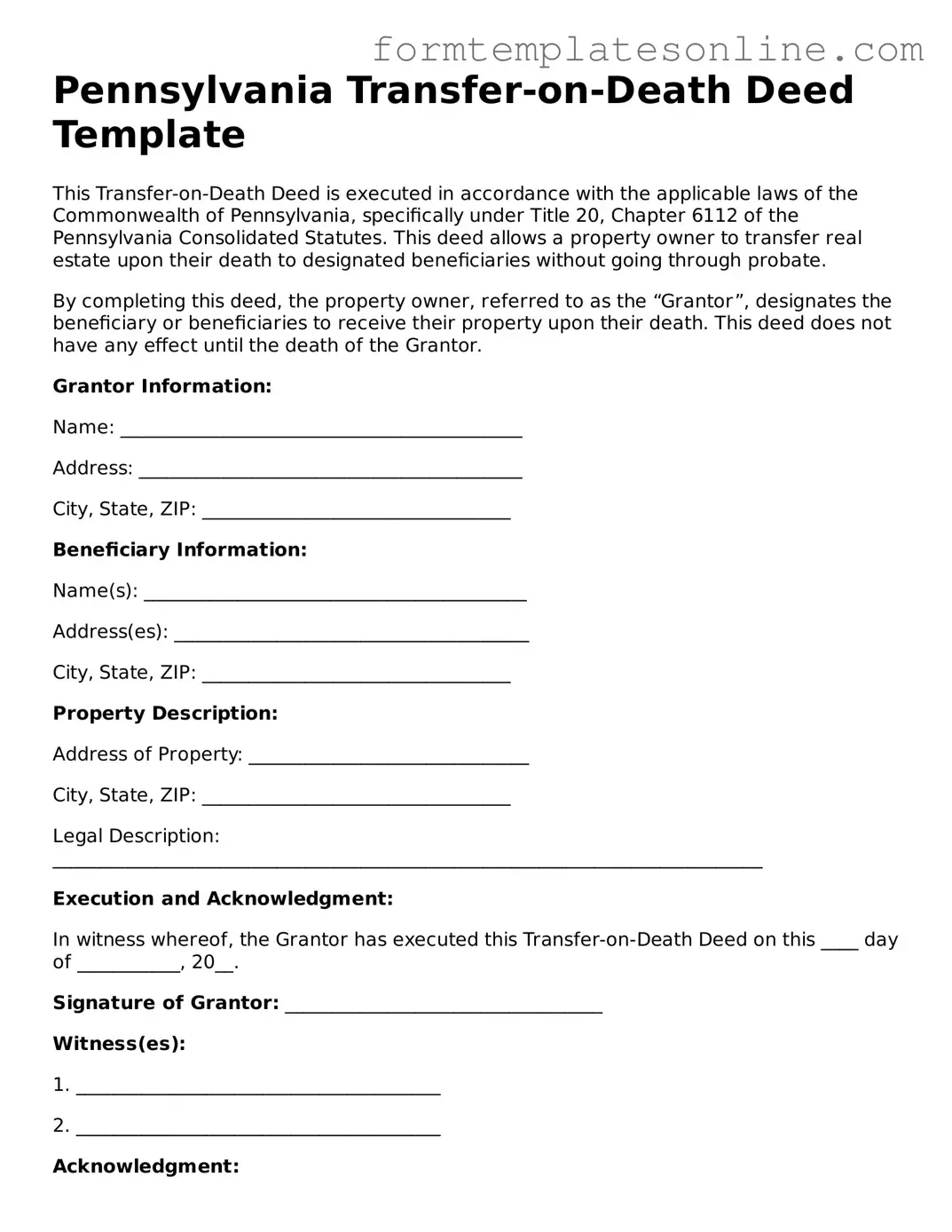Pennsylvania Transfer-on-Death Deed Template
This Transfer-on-Death Deed is executed in accordance with the applicable laws of the Commonwealth of Pennsylvania, specifically under Title 20, Chapter 6112 of the Pennsylvania Consolidated Statutes. This deed allows a property owner to transfer real estate upon their death to designated beneficiaries without going through probate.
By completing this deed, the property owner, referred to as the “Grantor”, designates the beneficiary or beneficiaries to receive their property upon their death. This deed does not have any effect until the death of the Grantor.
Grantor Information:
Name: ___________________________________________
Address: _________________________________________
City, State, ZIP: _________________________________
Beneficiary Information:
Name(s): _________________________________________
Address(es): ______________________________________
City, State, ZIP: _________________________________
Property Description:
Address of Property: ______________________________
City, State, ZIP: _________________________________
Legal Description: ____________________________________________________________________________
Execution and Acknowledgment:
In witness whereof, the Grantor has executed this Transfer-on-Death Deed on this ____ day of ___________, 20__.
Signature of Grantor: __________________________________
Witness(es):
1. _______________________________________
2. _______________________________________
Acknowledgment:
State of Pennsylvania, County of _______________:
On this ____ day of ___________, 20__, before me, a Notary Public, personally appeared the Grantor, known to me (or satisfactorily proven) to be the person whose name is subscribed to this instrument, and acknowledged that he/she executed the same for the purposes therein contained.
Notary Signature: _______________________________
My Commission Expires: _______________________________
